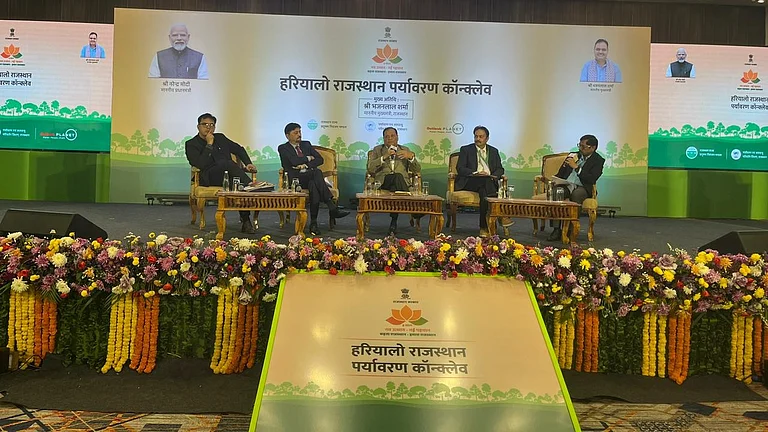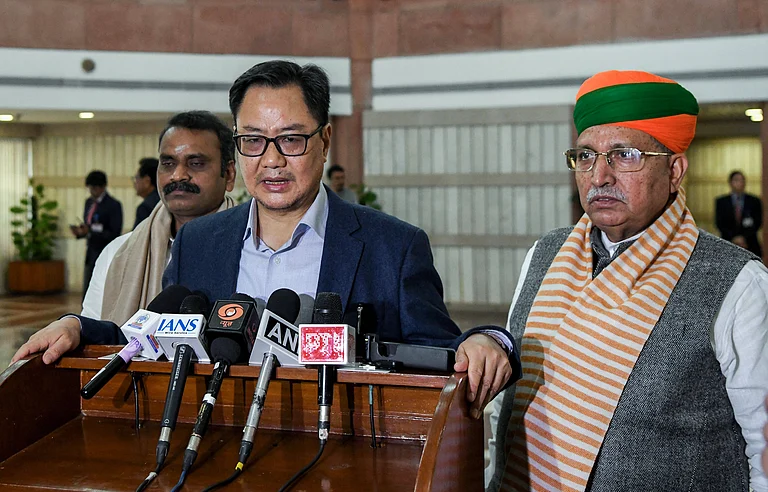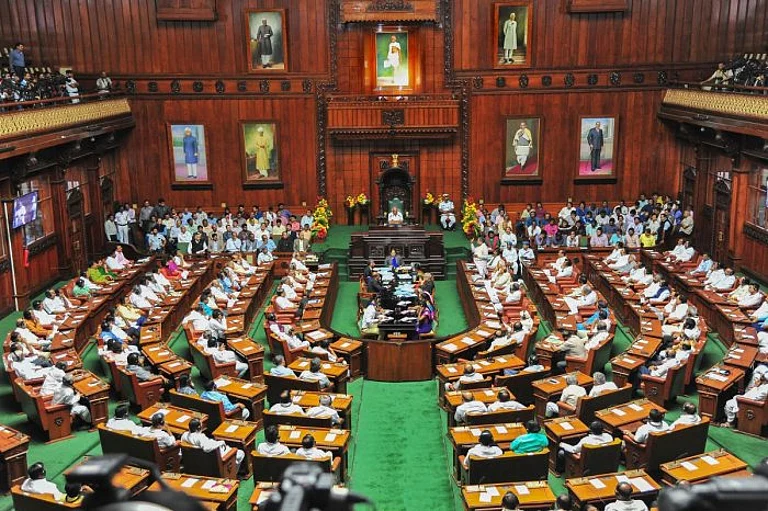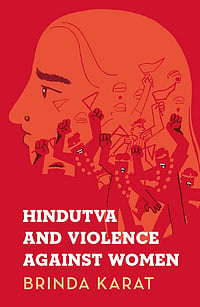Despite the rhetoric of creating an "inclusive India," the interim budget for 2024–25 continues to overlook and marginalize people with disabilities. Even as prices soar, allocations for people with disabilities have remained stagnant in recent years, and this trend persists in the interim budget.
The allocation for the implementation of the Rights of Persons with Disabilities Act, 2016, which the government neglected to implement, was reduced by 37.5%, from 240.39 crore in 2022–2023 to 150 crore in 2023–2024. In 2023–24, the scheme was underutilized, spending only 65.59 crore—less than half of the allocated funds. In addition, the government's budget for 2024–25 is a mere 135.33 crore, a decrease of 43% from 2022.
The Accessible India Campaign (Sugamya Bharat Abhiyan) was launched to make public spaces, transport, and digital platforms more accessible to people with disabilities. Its sincerity is called into question by the budgetary cuts.
Notably, the budget makes no provision for increased funding for crucial autonomous bodies established by Acts of Parliament, such as the National University of Rehabilitation Science and Disability Studies, and the National Trust has seen a decrease in budgetary support, from 35 crore to 25 crore.
Major institutions such as the Artificial Limbs Manufacturing Corporation of India and the National Handicapped Finance and Development Corporation have had stagnating budget allocations. Apart from 25 free beds for poor patients, the government has not provided any financial support for the Indian Spinal Injury Centre.
Compared to the previous year, the funding allocated to the Indira Gandhi National Disability Pension Scheme remains unchanged at 290 crore. The pension amount has remained stagnant for more than a decade, with Rs 300 for people aged 18 to 79 and Rs. 500 for those above 79, despite the skyrocketing rise in the cost of living during this period. Even this meager amount covers only 3.8% of the people with disabilities reported in the 2011 census. To be eligible for the scheme's benefits, a person must have a disability classified as at least 80% severe and fall Below the Poverty Line (BPL).
There are 20 million people in India grappling with sickle cell anemia, primarily concentrated in tribal regions. The government has initiated the unscientific Sickle Cell Anemia Elimination Mission 2047 in 2023, aiming to screen over 7 crore people. Although there was a target of screening 2.5 crore people for sickle cell anemia in FY 2023–2024, as of November 2023, only 64,29,957 screenings have taken place.
The Union government is distributing iron-fortified rice through midday meals, anganwadis, and the public distribution system. However, people with sickle cell anemia (SCA), thalassemia, acute infections, acute malnutrition, specific stages of malaria, diabetes, or tuberculosis should avoid these iron-fortified foods.
A customized diet can help people with sickle cell anemia get optimal nutrition and immune function, reducing their risk of sickness and mortality. However, the government has not included any additional nutritional aid for persons with SCA in its eradication drive in 2023–24 or 2024–25.
The minister's assurance that "there is no longer any need to worry about food" contrasts sharply with the unsettling reality that India is ranked 111th out of 125 countries on the 2023 Global Hunger Index, indicating a severe level of hunger. The budget allocation for food subsidies falls short by around 25% compared to the actual expenditure in the fiscal year 2022–23, and it is 5% lower than the revised estimate for 2023–24.
In recent years, the Mission Anganwadi Saksham and POSHAN initiatives, crucial for tackling malnutrition, have experienced consistent reductions in their budgets. The most recent budget shows a 1.5 percent decrease in allocation compared to the revised estimates of 2023–2024.
The government stated that 'Nari Shakti' is given priority in the interim budget; however, the gender budget allocations are projected to remain at roughly 5-6% of total expenditure, showing a little change from the previous year, even though the Census-2011 revealed that there are 11,824,355 women with disabilities, making up 44.09% of the total disabled population. Furthermore, the Ministry of Women and Child Development's budgetary allotments remain stagnant at 0.5% of the total expenditure.
The SAMARTHYA scheme, which incorporates vital programs for expectant women, including the Pradhan Mantri Matru Vandana Yojana, has encountered fund cuts in the Union budget 2023–24 and interim budget 24–25. Initially proposed at 2582 crores, it was subsequently revised to 1863.85 crores, reflecting a decrease of 718.15 crores. This year's allotment was also reduced from 69.99 crores from the previous year.
According to the 2011 national census, 64% of people with disabilities in India are unemployed. The Mahatma Gandhi National Rural Employment Guarantee Act (MGNREGA), aimed at prioritizing employment for people with disabilities in rural India, requires two lakh crore to restore its full functionality. However, funding for the scheme has witnessed massive cuts in recent years. The repercussions of this year's neglect are particularly stark, affecting 18 million disabled villagers who now find themselves without MGNREGA employment.
The central government's mandatory implementation of the National Mobile Monitoring System app on January 1, 2023, for monitoring MGNREGA employment jeopardized the livelihoods of thousands of disadvantaged rural workers, particularly those with disabilities. Due to poor connectivity and electricity supply, internet shutdowns, and lack of digital literacy, many workers have been unable to register attendance for working days. Special provisions made for people with disabilities under MGNREGA are not accounted for in this app.
The Pradhan Mantri Gramin Digital Saksharta Abhiyan (PMGDISHA) was launched in 2017 to bridge the digital divide and spread digital literacy in rural areas by training its populations to use computers and digital devices like tablets and smartphones. It specifically targeted marginalized groups, including Scheduled Castes (SC), Scheduled Tribes (ST), Below Poverty Line (BPL) individuals, women, people with disabilities, and minorities. However, the government stopped funding the program in 2023.
With an illiteracy rate of 55%, people with disabilities find themselves at the margins of the educational spectrum. In school education, the nominal increase of less than 1% compared to the revised 2023 budgets masks a decline of about 5% in real terms, fueled by escalating inflation. Higher education confronts a stark reality, grappling with an 18% decrease of 9625 crore. Exacerbating the situation, the fund for scholarships dedicated to students with disabilities sees a reduction from 155 crore in 2023–24 to 142.68 crore. This cut reinforces their exclusion from the educational system, amplifying the challenges faced by a group already battling high illiteracy rates.
Even as the Finance Minister said that “the country is very proud of our youth scaling new heights in sports,” she reduced funding for sports persons with disabilities. Their allocation in the upcoming fiscal year has been cut by a drastic 67%, from 76 crore in 2023–24 to 25 crore.
According to a recent UN report, India’s elderly population is rapidly increasing. It is projected in the report that by the year 2036, people aged 60 or above will constitute 15% of the population, leading to an increase in the number of people with disabilities living in India. India has become the world’s most populated country. Yet, we have to rely on the 2011 census, as the census scheduled for 2021 was postponed to 2024. Even in the absence of a reliable estimate of the number of people with disabilities, the government is slashing funds for their welfare.
With the disability rate among the poor twice that among those above the poverty line, all cuts affecting the needs of the poor invariably also take a toll on the bulk of the disabled population.






















